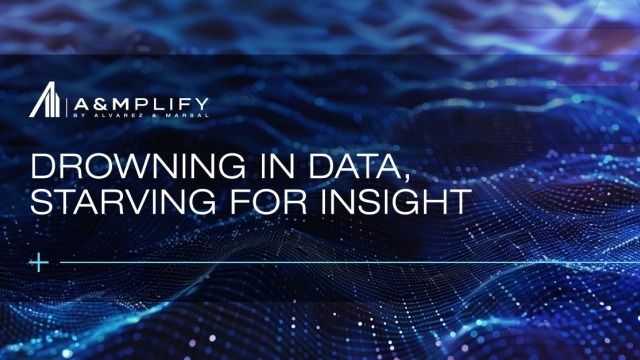AI and Digitization Trends in Supply Chain Management
Innovative supply chain technologies have a high potential for positive impact on people, performance and industries. A great supply chain allows for collaborative planning across all functions. It's process first, then tools to accelerate and improve the process network. It’s outcome-focused, driving to the right metrics.
Disruptions like the pandemic are no longer rare and unpredictable “black swan” events. The high threat of natural disasters, political unrest, economic crises and pandemics will continue. It’s imperative to build the capabilities that mitigate such disruptions. Companies need to assess their digital readiness and start investing—or accelerating their investments—in digital supply-chain transformation.
A New Approach to Supply Chain Digitization
Conventional wisdom says that it takes three to five years and tens of millions of dollars to digitize a corporation’s supply chain. However, a few companies have reaped major benefits—including higher revenue and customer retention with a faster, cheaper approach. This new approach involves leveraging available data as well as using analytics to segment and better understand customer or supplier behavior. It also optimizes inventory, production and procurement by adding additional automation to revamp or reintroduce novel processes. The current environment may be the new normal for a while. It will be critical to operate with agility in meeting customer demand while controlling fulfillment, manufacturing and procurement costs.
The A&MPLIFY team believes that when a company embarks on an investment cycle, it is critical to identify the use case, implement and quickly prove value that can potentially fund continued investment cycles. As an example, identify a digitization opportunity for inventory management, invest and implement the specific use case. Then, use some of the savings to invest, implement and win in the next supply chain function. This cycle is continual and agile, re-evaluating priorities regularly as the investment cycle continues.
As companies seek to exploit the benefits of improved levels of supply chain digitalization and networking, innovative technologies have the potential to significantly disrupt the existing supply chain operating models and offer dramatic advances in supply chain management. These cutting-edge innovations are streamlining customer fulfillment, aiding in the attainment of profitability objectives and bolstering the resilience of supply chains. By offering comprehensive supply-chain visibility through real-time data and intelligent insights, these technologies empower companies to make agile and informed decisions amidst evolving market dynamics.
Here are the top technology trends to consider in your supply chain approach:
Hyper automation
A combination of technologies—artificial intelligence (AI), machine learning (ML), smart machines, robotic process automation (RPA), etc.—that can facilitate or automate tasks and activities at scale, that originally required some form of human judgment or action.
Embedded AI and analytics
Software capabilities that deliver real-time reporting, interactive data visualization and/or advanced analytics and intelligence—including ML, predictive and prescriptive analytics—directly into an enterprise business application.
Augmented data intelligence
A tool consisting of existing and new technologies combined with near-real-time data from the ecosystem, which facilitates advanced data processing and allows for the delivery of insightful information, predictions and suggestions that are relevant and adaptive to user experiences toward more connected supply chain data.
Digital supply chain twin
A digital—dynamic, real-time, and time-phased—representation of the various associations between the data objects of the physical (and often multi-enterprise) supply chain, as a basis for local and end-to-end aligned decision making.
Edge ecosystems
The combination of edge computing and edge data processing, delivered through networks of human resources, devices, smart machines, sensors, and computing systems that allow people to make informed, reliable, secure, and agile decisions at the edges of enterprises.
Blockchains in Supply chain
| A blockchain is irrevocable transactional records (blocks) that are shared and accessible by all supply chain participants in a predetermined blockchain ecosystem (network). Blockchain’s distributed ledger can track highly complex supply chains at a more granular level than otherwise, by overcoming concerns related to suppliers’ business confidentiality and privacy or when requiring a trustworthy system of records. This can be used to improve efficiency through analytics to detect theft, fraud, or even tax evasion. |
Some companies like Volvo and Daimler are already using blockchain to assess carbon footprint or to ensure that the cobalt used in their batteries comes from ethical sources. |
Internet of things (IoT)
| IoT is a network of physical objects that contain embedded or covert technology to communicate, sense, or interact with their internal states or the external environment. The adoption of IoT is growing in supply chains, but much activity is still focused on critical areas such as logistics, sourcing, and transportation. However, the IoT could have a broad and profound impact on the supply chain in areas such as, improved asset utilization, governance, higher uptime, improved customer service, improved end-to-end supply chain automation, or improved supply availability, and supply chain visibility and reliability. |
For instance, Tetrapak uses IoT technologies to connect all equipment at the customer plant, enabling machines at different production stages such as processing, filling, and distribution to communicate with each other and synchronize. This gives the customer an overview of the plant and offers performance optimization opportunities for the whole production. |
A&Mplify: Your Supply Chain Partner
The A&MPLIFY team advises technology leaders responsible for innovation in supply chain and operations to:
| 1. | Consider a company’s supply chain maturity and the risk culture of the organization, identifying digital initiatives (value hypotheses) that have the highest value, serves the mission and aligns with company values and resources (budget, talent, etc.). |
| 2. | Adopt robust digital operating and governance models that provide the muscles around new capabilities in the organization to succeed. |
| 3. | Target efforts around integration, visibility and data to address challenges during periods of disruption. |
| 4. | Create an acceleration roadmap that fosters new initiatives being designed, implemented, reiterated and improved over time based on the company’s overall strategy. |
These trends will continue and will help to accelerate supply chain digital transformation over the next several years.
Interested in learning more about A&MPLIFY’s capabilities?
About A&MPLIFY
A&MPLIFY is an AI-powered agency that combines experience design, artificial intelligence and technology to help companies amplify growth, digital transformation and impact on the communities they serve.
Learn more: www.a-mplify.com

|



